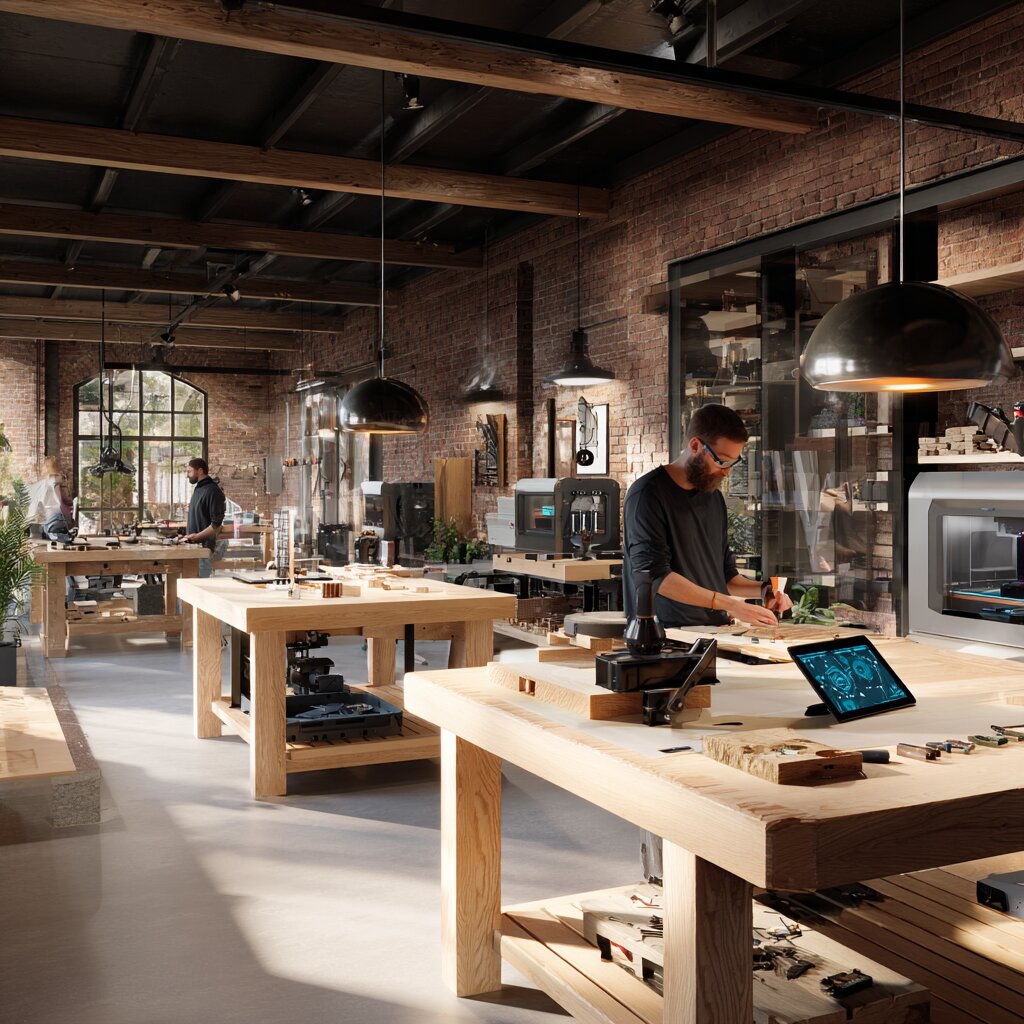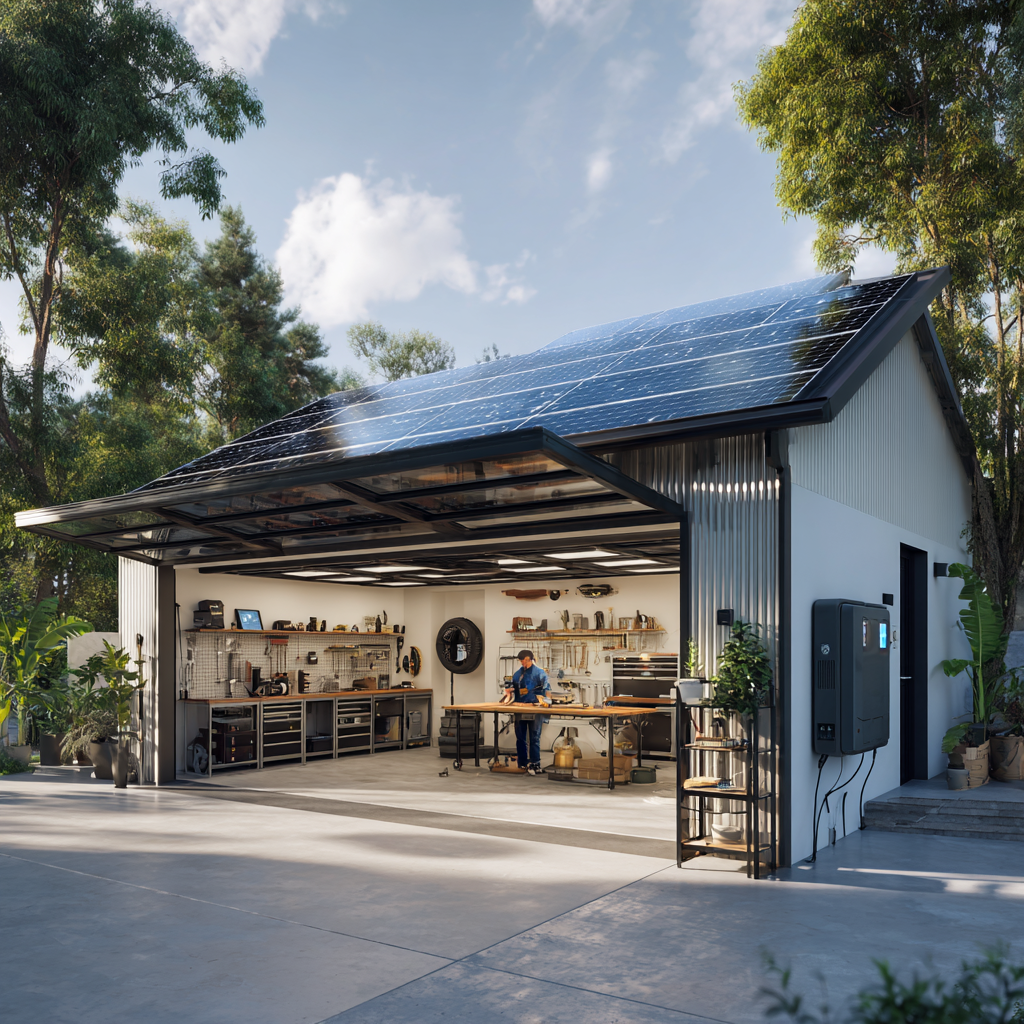Smart Device Integration from Different Manufacturers - Matter, Zigbee and More

The biggest challenge of smart homes isn't technology, but compatibility. When you have Philips Hue, Shelly switches, Xiaomi sensors, and Samsung TV, how do you connect everything? In this guide, I'll show you how to build a functioning ecosystem regardless of brands.
The Smart Home Fragmentation Problem
Reality of Modern Households
A typical smart home looks like this:
Lighting: IKEA Trådfri (affordable)
Outlets: Shelly (local control)
Sensors: Xiaomi Aqara (good value)
TV: Samsung (bestseller)
Phone: Android (80% market)
Voice Assistant: Google Home (English support)
Problem: Every brand has its own app and protocol!
Cost of Incompatibility
Time Losses:
- 5+ apps for control
- Complex automations
- Debugging after updates
- Relearning interfaces
Financial Impact:
- Vendor lock-in premium prices
- Buying "translators" (hubs)
- Duplicated functionality
- Premature obsolescence
Protocols and Standards
Matter - Future of Integration
What is Matter:
- Standard defined by Apple, Google, Amazon, Samsung
- Local communication via Thread/WiFi
- Unified API for all platforms
- End-to-end encryption
Matter in Practice (2025):
Supported Categories:
✅ Lights and switches
✅ Plugs and sensors
✅ Thermostats
✅ Door locks
✅ Window blinds
⏳ Cameras (coming 2025)
⏳ Robotic vacuum (coming 2026)
Compatible Brands:
- Full support: Philips Hue, IKEA, Eve
- Partial: Shelly (selected models), TP-Link
- Planned: Xiaomi, Sonoff (firmware updates)
Zigbee - Proven Standard
Zigbee Advantages:
- Self-healing mesh network
- Low power consumption
- Standardized profiles
- 65,000 devices per network
Zigbee Hub Requirements:
Required Coordinator:
- ConBee II USB stick ($60)
- Sonoff Zigbee 3.0 Bridge ($32)
- Philips Hue Bridge (Hue only)
- IKEA Trådfri Gateway (IKEA only)
Software:
- Zigbee2MQTT (most flexible)
- ZHA in Home Assistant
- Deconz (ConBee software)
Compatible Devices:
| Brand | Compatibility | Note |
|---|---|---|
| Philips Hue | ✅ Full | Needs unpairing from Hue Bridge |
| IKEA Trådfri | ✅ Full | Including LED controllers |
| Xiaomi Aqara | ✅ Most | Some proprietary features |
| Tuya/Smart Life | ⚠️ Partial | Depends on chipset |
| Sonoff Zigbee | ✅ Full | SNZB series |
Z-Wave - Premium Alternative
Key Features:
- 908.4 MHz (no WiFi interference)
- Strong mesh network
- Higher price but better quality
- Regional certification required
Z-Wave in US:
USB Controller:
- Aeotec Z-Stick 7 ($100)
- Sigma Designs UZB ($72)
Popular Devices:
- Aeotec (multisensors, smart plugs)
- GE/Jasco (switches, dimmers)
- Ring (security devices)
WiFi Based Solutions
Advantages:
- No additional hubs
- Fast configuration
- Remote access via internet
Disadvantages:
- Overloads WiFi network
- Higher power consumption
- Router capacity problems
Recommended Brands:
- Shelly - local API, cloud optional
- Tasmota firmware - open source, full local
- ESPHome - DIY integration with HA
Integration Platforms
Home Assistant - King of Integration
Supported Protocols:
# Example configuration.yaml
# Zigbee via Z2M
mqtt:
broker: localhost
port: 1883
# Z-Wave
zwave_js:
usb_path: /dev/ttyACM0
# Shelly auto-discovery
shelly:
# Matter (experimental)
matter:
integration_created_matter_devices: true
# Philips Hue
hue:
bridges:
- host: 192.168.1.2
# Samsung SmartThings
smartthings:
access_token: !secret smartthings_tokenUnified Dashboard:
# All devices in one view
type: entities
title: "Whole House"
entities:
- light.hue_living_room # Philips Hue
- switch.shelly_kitchen # Shelly Plus 1
- sensor.aqara_temperature # Xiaomi via Zigbee
- climate.nest_thermostat # Nest via Google
- media_player.samsung_tv # Samsung SmartThingsOpenHAB - Java Alternative
Binding Support:
- 300+ official bindings
- Mature Zigbee/Z-Wave support
- KNX professional integration
- Rule engine with multiple languages
Samsung SmartThings
Hub Capabilities:
- Zigbee + Z-Wave + WiFi
- Cloud and local processing
- Samsung ecosystem integration
- Matter hub functionality
Disadvantages:
- Cloud dependency
- Limited programming
- Vendor lock-in risk
Apple HomeKit
Supported via Bridges:
Homebridge plugins:
- homebridge-shelly: Shelly devices
- homebridge-xiaomi-mi: Xiaomi sensors
- homebridge-broadlink-rm: IR control
- homebridge-samsung-tizen: Samsung TV
Google Home / Alexa
Connection via:
- Nabu Casa (Home Assistant cloud)
- IFTTT webhooks
- SmartThings as hub
- Direct integration (Shelly, TP-Link)
Practical Implementation
Scenario: Complete Integration
Hardware Setup:
Hub: Raspberry Pi 4 with Home Assistant
Zigbee: ConBee II USB stick
Mixed Devices:
- 10x Philips Hue bulbs
- 5x Shelly 1PM switches
- 8x Xiaomi Aqara sensors
- 1x Samsung TV
- 1x Google Nest Hub
Step 1: Home Assistant Setup
# Installation commands
# Home Assistant OS on Raspberry Pi
wget https://github.com/home-assistant/operating-system/releases/download/9.5/haos_rpi4-64-9.5.img.xz
# Flash to SD card
sudo dd if=haos_rpi4-64-9.5.img of=/dev/sdX bs=1M
# First boot, wait 10 minutes
# Open http://IP_ADDRESS:8123Step 2: Zigbee2MQTT Configuration
# Add-on configuration
{
"data_path": "/config/zigbee2mqtt",
"external_converters": [],
"devices": "devices.yaml",
"groups": "groups.yaml",
"homeassistant": true,
"permit_join": false,
"mqtt": {
"base_topic": "zigbee2mqtt",
"server": "mqtt://core-mosquitto:1883",
"user": "zigbee_user",
"password": "your_password"
},
"serial": {
"port": "/dev/ttyACM0",
"adapter": "conbee"
},
"advanced": {
"channel": 11,
"pan_id": "GENERATE",
"network_key": "GENERATE"
}
}Step 3: Adding Devices
Philips Hue Migration:
# 1. Reset Hue bulbs (5x fast on/off)
# 2. Enable pairing in Zigbee2MQTT
# 3. Bulb automatically detected
# 4. Rename in MQTT
# MQTT topic structure:
zigbee2mqtt/hue_living_room_1/set {"state": "ON", "brightness": 200}
zigbee2mqtt/hue_living_room_1/get {"state": "OFF"}Shelly Integration:
# configuration.yaml automatic detection
shelly:
# Shelly devices appear automatically
# if on same network
# Manual addition:
switch:
- platform: shelly
host: 192.168.1.50
name: "Kitchen Main Light"Xiaomi Sensors:
# Aqara sensors into pairing mode
# Hold button 3 seconds until blinking
# In Z2M console:
Permit join: ON
# Wait for detection
# Rename deviceStep 4: Unified Automation
# Cross-brand automation example
automation:
- alias: "Home from school"
trigger:
# Xiaomi door sensor
- platform: state
entity_id: binary_sensor.front_door
to: "on"
condition:
# Nest thermostat via Google integration
- condition: numeric_state
entity_id: climate.nest_thermostat
attribute: current_temperature
below: 68
# Time condition
- condition: time
after: "15:00:00"
before: "17:00:00"
action:
# Philips Hue via Zigbee
- service: light.turn_on
entity_id:
- light.hue_entryway
- light.hue_living_room
data:
brightness: 180
# Shelly switches
- service: switch.turn_on
entity_id: switch.shelly_kitchen
# Samsung TV via SmartThings
- service: media_player.turn_on
entity_id: media_player.samsung_tv
# Google announcement
- service: tts.google_translate_say
entity_id: media_player.nest_hub
data:
message: "Welcome home! Setting comfortable atmosphere."
language: enIntegration Troubleshooting
Zigbee Network Optimization
Channel Selection:
# WiFi scanner for interference check
sudo iwlist scan | grep Frequency
# Recommended Zigbee channels:
Channel 11: 2405 MHz (between WiFi channels 1&6)
Channel 15: 2425 MHz (between WiFi channels 6&11)
Channel 20: 2450 MHz (between WiFi channels 11&13)
Channel 25: 2475 MHz (above WiFi)Mesh Quality:
# Z2M network map check
# Monitor:
- Link Quality Indicator (LQI > 100)
- Routing paths (max 3 hops)
- Coordinator load (< 80%)
# Add router devices:
- IKEA Trådfri outlets as repeaters
- Shelly Plus i/o in router modeMatter Debugging
Commissioning Problems:
# Home Assistant Matter logs
tail -f /config/home-assistant.log | grep matter
# Chip-tool testing (advanced)
./chip-tool onoff toggle 1 1
./chip-tool basicinformation read vendor-name 1 0Cross-platform Automation Debugging
Template Testing:
# Template debugging in HA
sensor:
- platform: template
sensors:
debug_automation:
value_template: >-
{% set hue_state = states('light.hue_living_room') %}
{% set shelly_state = states('switch.shelly_kitchen') %}
{% set xiaomi_temp = states('sensor.aqara_temperature') %}
Hue: {{ hue_state }}, Shelly: {{ shelly_state }}, Temp: {{ xiaomi_temp }}Multi-vendor System Security
Network Segmentation
VLAN Design:
VLAN 10: Management (HA, router admin)
VLAN 20: Secure IoT (cameras, locks)
VLAN 30: Standard IoT (lights, sensors)
VLAN 40: Media (TV, speakers)
VLAN 50: Guest devices
Inter-VLAN rules:
- VLAN 10 → All (manage)
- VLAN 20 ← Only VLAN 10 access
- VLAN 30 ← VLAN 10, limited VLAN 20
- VLAN 40 ← VLAN 10, 30 (automation)
Protocol Security
Zigbee Security:
# Change default keys
network_key: [random 16 bytes]
pan_id: [random 16-bit]
# Regular rotation:
permit_join: false (default)
# Only when adding new devicesMatter Security:
- End-to-end encryption built-in
- Decentralized commissioning
- No cloud dependencies required
Vendor Trust Levels
Security Ranking:
Tier 1 (Highest trust):
- Philips Hue (EU company, good record)
- IKEA (transparency, local processing)
- Eve Systems (Privacy by design)
Tier 2 (Moderate trust):
- Shelly (Local API, open firmware)
- TP-Link (decent privacy policy)
- Samsung (big corp, some data collection)
Tier 3 (Lower trust):
- Xiaomi (Chinese company, cloud dependent)
- Tuya ecosystem (extensive telemetry)
- No-name Chinese brands
Future Strategy
Migration Path to Matter
2025 Roadmap:
- Q1 2025: More Zigbee → Matter bridges
- Q2 2025: Native Matter support in major brands
- Q3 2025: Matter cameras and security
- 2026: Thread border router ubiquity
Matter Preparation:
# Home Assistant Matter readiness
matter:
enable_server: true
# Thread border router
thread:
dataset: "generated_thread_dataset"
# Future-proof device choices:
# ✅ Buy: Thread/Matter ready devices
# ⚠️ Caution: WiFi-only without Matter roadmap
# ❌ Avoid: Proprietary cloud-only solutionsRecommended 2025+ Architecture
Layer 1: Physical protocols
- Matter over Thread (new devices)
- Zigbee 3.0 (existing devices)
- WiFi 6E (high bandwidth needs)
Layer 2: Integration platform
- Home Assistant (primary)
- Matter bridges (vendor specific)
- MQTT (device communication)
Layer 3: User interfaces
- HA mobile app (primary control)
- Google/Alexa (voice)
- Local dashboards (wall mounted)
Layer 4: Cloud services (optional)
- Weather data
- Remote access (encrypted tunnel)
- Backup/sync (encrypted)
Practical Examples
Scenario: Complete Home Cinema
# Device mix:
# - Samsung TV (SmartThings)
# - Philips Hue lights (Zigbee)
# - Sonos soundbar (WiFi)
# - Shelly relay for projector (WiFi)
# - Xiaomi motion sensor (Zigbee)
automation:
- alias: "Movie Night Scene"
trigger:
- platform: state
entity_id: media_player.samsung_tv
attribute: source
to: "Netflix"
action:
# Dim Hue lights to 10%
- service: light.turn_on
entity_id: light.hue_living_room_group
data:
brightness: 25
color_temp: 500
# Start Sonos ambient
- service: media_player.play_media
entity_id: media_player.sonos_living_room
data:
media_content_type: music
media_content_id: "spotify:playlist:ambient"
# Lower volume
- service: media_player.volume_set
entity_id: media_player.sonos_living_room
data:
volume_level: 0.3
# Close motorized curtains
- service: cover.close_cover
entity_id: cover.shelly_blindsScenario: Energy Monitoring
# Multi-vendor energy tracking:
sensor:
- platform: template
sensors:
total_power_consumption:
unit_of_measurement: "W"
value_template: >-
{% set hue_power = states('sensor.hue_bridge_power')|float %}
{% set shelly_power = states('sensor.shelly_total_power')|float %}
{% set tv_power = states('sensor.samsung_tv_power')|float %}
{{ (hue_power + shelly_power + tv_power)|round(1) }}
daily_energy_cost:
unit_of_measurement: "USD"
value_template: >-
{% set kwh = states('sensor.daily_energy_total')|float %}
{{ (kwh * 0.12)|round(2) }}Conclusion
Integrating different brands isn't rocket science, but requires the right strategy. The key is:
- Unifying platform - Home Assistant as brain
- Standard protocols - Zigbee, Matter, WiFi with local API
- Gradual migration - don't change everything at once
- Future-proofing - invest in open standards
My 2025 Recommendations:
- Hub: Raspberry Pi 4 + Home Assistant
- Protocols: Zigbee (present) + Matter (future)
- Strategy: Buy Matter ready, use Zigbee bridges
Smart home doesn't have to be mono-brand. With proper integration, you create a system that's better than the sum of its parts.

